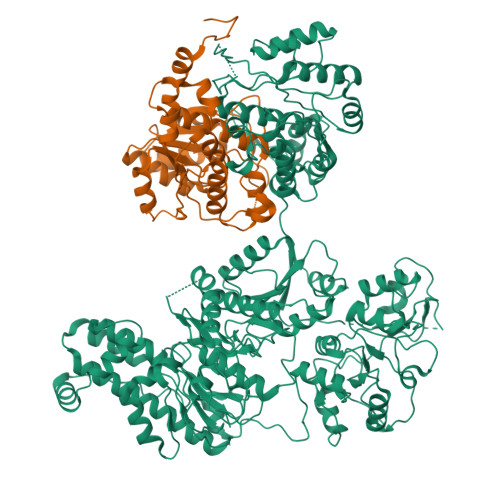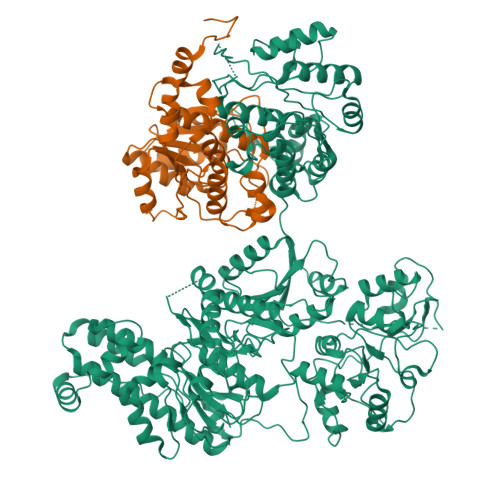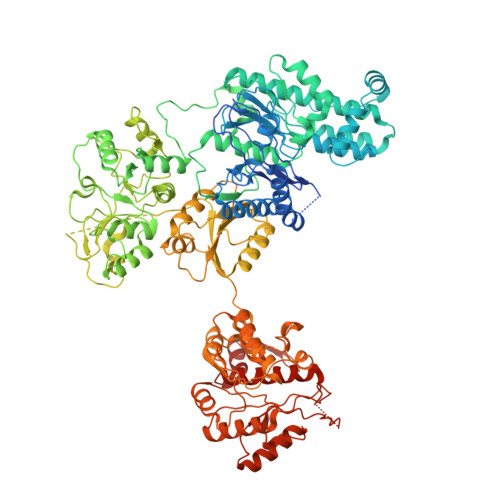Structure-function analysis of an ancient TsaD-TsaC-SUA5-TcdA modular enzyme reveals a prototype of tRNA t6A and ct6A synthetases.
Jin, M., Zhang, Z., Yu, Z., Chen, W., Wang, X., Lei, D., Zhang, W.(2023) Nucleic Acids Res 51: 8711-8729
- PubMed: 37427786
- DOI: https://doi.org/10.1093/nar/gkad587
- Primary Citation of Related Structures:
8IDE - PubMed Abstract:
N 6-threonylcarbamoyladenosine (t6A) is a post-transcriptional modification found uniquely at position 37 of tRNAs that decipher ANN-codons in the three domains of life. tRNA t6A plays a pivotal role in promoting translational fidelity and maintaining protein homeostasis. The biosynthesis of tRNA t6A requires members from two evolutionarily conserved protein families TsaC/Sua5 and TsaD/Kae1/Qri7, and a varying number of auxiliary proteins. Furthermore, tRNA t6A is modified into a cyclic hydantoin form of t6A (ct6A) by TcdA in bacteria. In this work, we have identified a TsaD-TsaC-SUA5-TcdA modular protein (TsaN) from Pandoraviruses and determined a 3.2 Å resolution cryo-EM structure of P. salinus TsaN. The four domains of TsaN share strong structural similarities with TsaD/Kae1/Qri7 proteins, TsaC/Sua5 proteins, and Escherichia coli TcdA. TsaN catalyzes the formation of threonylcarbamoyladenylate (TC-AMP) using L-threonine, HCO3- and ATP, but does not participate further in tRNA t6A biosynthesis. We report for the first time that TsaN catalyzes a tRNA-independent threonylcarbamoyl modification of adenosine phosphates, leading to t6ADP and t6ATP. Moreover, TsaN is also active in catalyzing tRNA-independent conversion of t6A nucleoside to ct6A. Our results imply that TsaN from Pandoraviruses might be a prototype of the tRNA t6A- and ct6A-modifying enzymes in some cellular organisms.
Organizational Affiliation:
School of Life Sciences, Key Laboratory of Cell Activities and Stress Adaptation of the Ministry of Education, Lanzhou University, Lanzhou 730000, China.

















